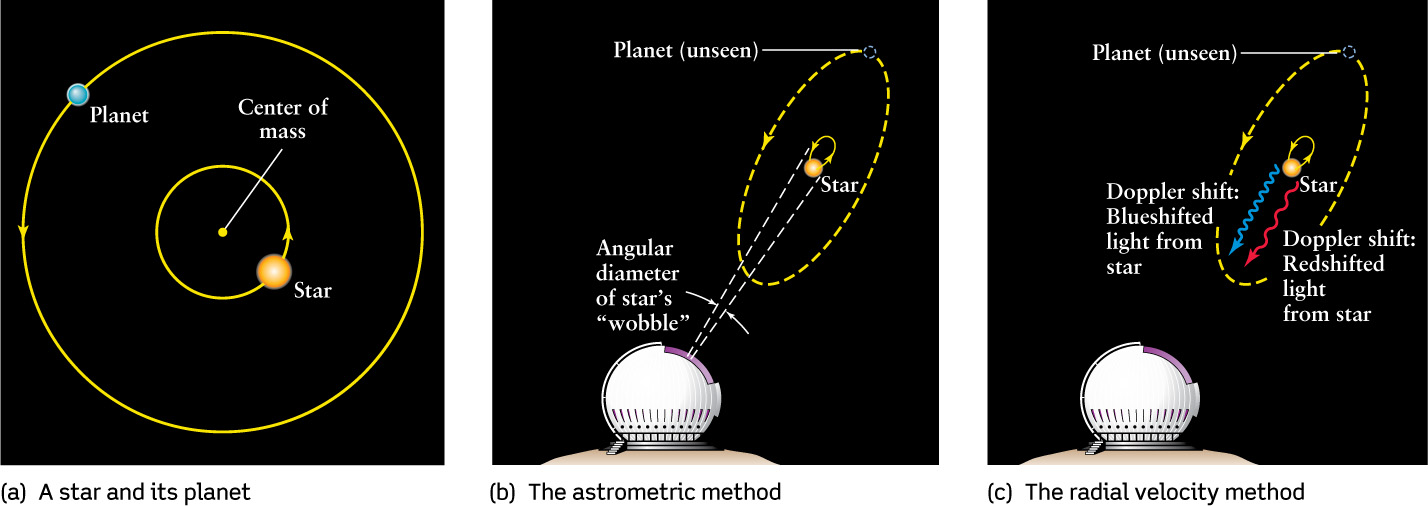
Figure 8-16: Detecting a Planet by Measuring Its Parent Star’s Motion (a) A planet and its star both orbit around their common center of mass, always staying on opposite sides of this point. Even if the planet cannot be seen, its presence can be inferred if the star’s motion can be detected. (b) The astrometric method of detecting the unseen planet involves making direct measurements of the star’s orbital motion. (c) In the radial velocity method, astronomers measure the Doppler shift of the star’s spectrum as it moves alternately toward and away from Earth. Analyzing the Doppler shift of the star’s light leads to the orbital period, orbital size (semimajor axis), and mass of the unseen planet. The radial velocity method works for circular and elliptical orbits and can even determine the orbital eccentricity.